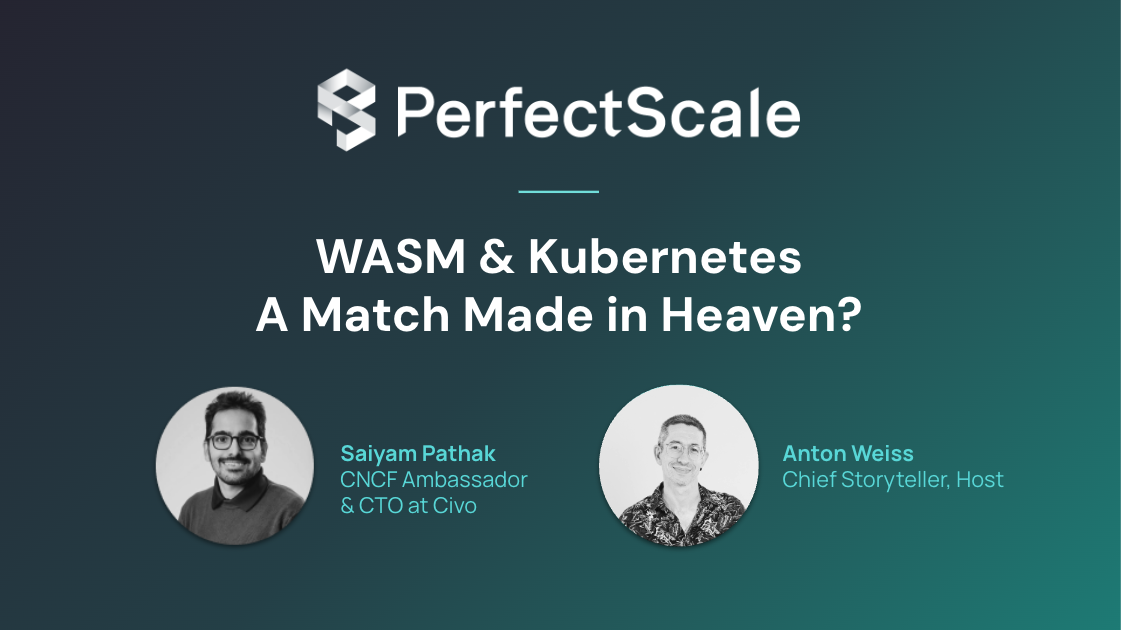Container orchestration has become an essential part of modern DevOps practices, enabling teams to efficiently manage and scale their applications. In this article, we will compare three popular container orchestration services: ECS, EKS, and Fargate. By understanding their key features, advantages, limitations, and performance, you can make an informed decision on which service best suits your needs.
Understanding Container Orchestration Services
A container orchestration service provides a platform for deploying and managing containers at scale. It automates tasks such as container deployment, scaling, load balancing, and monitoring. Container orchestration plays a vital role in DevOps, enabling developers to focus on application logic instead of infrastructure management.
Container orchestration services have revolutionized the way organizations deploy and manage applications. With the rise of microservices architecture and the need for continuous delivery, container orchestration has become an essential component of modern software development practices.
The Role of Container Orchestration in DevOps
Container orchestration simplifies the deployment and management of applications, allowing organizations to adopt microservices architecture and implement continuous delivery practices. By abstracting away the complexities of infrastructure management, container orchestration empowers development teams to focus on writing code and delivering value to end-users.
One of the key benefits of container orchestration is its ability to manage the lifecycle of containers. With container orchestration services, developers can easily spin up new containers, scale them horizontally or vertically, and gracefully terminate them when they are no longer needed. This level of automation and control ensures that applications are always available and responsive to user demands.
Key Features of Container Orchestration Services
Container orchestration services offer various features to streamline container management:
- Automated container deployment and scaling: Container orchestration services automate the process of deploying containers, making it easy to scale applications up or down based on demand. This eliminates the need for manual intervention and ensures that applications can handle high traffic loads without any downtime.
- Load balancing and service discovery: Container orchestration services provide built-in load balancing capabilities, distributing incoming traffic across multiple containers to ensure optimal performance. Additionally, they offer service discovery mechanisms that allow containers to discover and communicate with each other seamlessly.
- Rolling updates and rollbacks: With container orchestration, organizations can easily perform rolling updates, deploying new versions of applications without any service interruptions. In case of any issues or bugs, container orchestration services also support rollbacks, reverting to a previous version of the application to maintain stability.
- Resource utilization monitoring: Container orchestration services provide real-time monitoring of resource utilization, allowing organizations to optimize their infrastructure and ensure efficient resource allocation. This helps in identifying bottlenecks, optimizing performance, and reducing costs.
- Container health checks: Container orchestration services continuously monitor the health of containers, automatically restarting failed containers or replacing them with healthy ones. This proactive approach to container management ensures that applications are always running smoothly and reduces the risk of service disruptions.
Overall, container orchestration services have revolutionized the way organizations deploy and manage applications. By providing automation, scalability, and resilience, container orchestration enables developers to focus on building robust and innovative applications, while ensuring that they are deployed and managed efficiently.
An In-Depth Look at ECS (Elastic Container Service)
ECS is Amazon Web Services' (AWS) managed container orchestration service. It provides a secure and scalable platform for deploying and managing containers.
Overview of ECS
ECS simplifies the deployment and management of applications using Docker containers. It integrates with other AWS services, such as EC2, Elastic Load Balancing, and CloudWatch, to provide a comprehensive container orchestration solution.
When using ECS, developers can focus on building their applications without worrying about the underlying infrastructure. ECS takes care of the heavy lifting, including provisioning and scaling the necessary resources, managing container instances, and distributing containers across the available resources.
One of the key features of ECS is its ability to schedule containers based on resource availability and utilization. This ensures efficient resource allocation and helps optimize application performance. Additionally, ECS supports automatic scaling, allowing applications to handle increased traffic or workload by dynamically adjusting the number of running containers.
Furthermore, ECS provides robust security features, including IAM roles and VPC isolation. IAM roles allow developers to assign granular permissions to containers, ensuring that only authorized resources can be accessed. VPC isolation, on the other hand, provides an additional layer of security by isolating containers within a virtual private network, protecting them from unauthorized access.
Benefits of Using ECS
ECS offers several advantages:
- Tightly integrated with AWS services, simplifying setup and management
- Flexible deployment options, including EC2-based and serverless with Fargate
- Automatic scaling based on resource utilization or custom-defined metrics
- Robust security features, including IAM roles and VPC isolation
By leveraging the tight integration with other AWS services, developers can easily set up and manage their containerized applications. For example, ECS integrates with EC2 instances, allowing developers to launch and manage container instances seamlessly. It also integrates with Elastic Load Balancing, enabling automatic distribution of incoming traffic across containers.
ECS provides flexibility in deployment options. Developers can choose to run their containers on EC2 instances, which offers more control and customization options. Alternatively, they can opt for serverless deployment using AWS Fargate, which abstracts away the underlying infrastructure and allows developers to focus solely on their applications.
ECS simplifies the process of scaling applications. It can automatically scale the number of running containers based on resource utilization metrics, such as CPU and memory usage. Additionally, developers can define custom scaling policies based on specific application metrics, allowing for fine-grained control over scalability.
ECS prioritizes security and provides various features to protect applications and data. IAM roles enable developers to assign specific permissions to containers, ensuring that only authorized actions can be performed. VPC isolation adds an extra layer of security by isolating containers within a virtual private network, preventing unauthorized access from external sources.
Potential Drawbacks of ECS
Despite its advantages, ECS has a few limitations:
- Learning curve for setup and configuration
- Limited portability due to tightly coupled integration with AWS ecosystem
- Higher cost compared to open-source options
Setting up and configuring ECS can be complex, especially for developers who are new to container orchestration. It requires understanding various concepts, such as task definitions, services, and clusters. However, AWS provides extensive documentation and resources to help developers navigate through the learning curve.
While ECS offers seamless integration with other AWS services, it also creates a dependency on the AWS ecosystem. This tight coupling may limit portability, making it challenging to migrate applications to other cloud providers or on-premises environments. However, AWS has been working on initiatives like the Open Container Initiative (OCI) to promote interoperability and portability across different container platforms.
Using ECS comes with a cost, as it is a managed service provided by AWS. While the pricing is competitive, it may be higher compared to open-source container orchestration solutions like Kubernetes. However, the cost should be evaluated based on the overall benefits and the specific requirements of the application.
Examining EKS (Elastic Kubernetes Service)
EKS is AWS's managed Kubernetes service, offering a highly scalable and resilient platform for container orchestration.
When it comes to managing containers, EKS brings the power of Kubernetes to AWS users. With EKS, users can leverage familiar Kubernetes tools and APIs to efficiently manage their containers. EKS provides a managed Kubernetes control plane, which eliminates the operational overhead of managing the control plane components.
Understanding EKS
EKS is designed to simplify the deployment and management of containerized applications. By integrating Kubernetes into the AWS ecosystem, EKS enables users to take advantage of the scalability and flexibility of Kubernetes, while also leveraging the extensive suite of AWS services.
With EKS, users can easily deploy and manage their containers using the same tools and frameworks they are already familiar with. This compatibility with standard Kubernetes tools and frameworks allows for a seamless transition for users who are already experienced with Kubernetes.
Furthermore, EKS benefits from the extensive community support and vibrant ecosystem that surrounds Kubernetes. This means that users can tap into a wealth of knowledge, resources, and third-party integrations to enhance their container orchestration workflows.
Another advantage of EKS is its portability across cloud providers and on-premises deployments. This means that users can easily migrate their containerized applications between different cloud providers or even run them on their own infrastructure, without any major modifications.
Additionally, EKS leverages the built-in features of Kubernetes to provide scalability and fault tolerance. Kubernetes' ability to automatically scale applications based on demand and distribute workloads across multiple nodes ensures that applications running on EKS can handle high traffic and maintain high availability.
Advantages of EKS
EKS offers several advantages:
- Compatibility with standard Kubernetes tools and frameworks: EKS allows users to leverage their existing knowledge and tools, making it easier to adopt and manage containers.
- Extensive community support and vibrant ecosystem: With EKS, users can tap into the vast Kubernetes community, benefiting from their expertise, resources, and third-party integrations.
- Portability across cloud providers and on-premises deployments: EKS provides the flexibility to run containerized applications on different cloud providers or on-premises infrastructure, without vendor lock-in.
- Scalability and fault tolerance through Kubernetes' built-in features: EKS takes advantage of Kubernetes' powerful scaling and fault tolerance capabilities, ensuring that applications can handle varying workloads and maintain high availability.
Limitations of EKS
While EKS offers numerous benefits, it also has a few limitations:
- Complex setup and initial configuration compared to managed services: Setting up and configuring an EKS cluster requires more effort and knowledge compared to fully managed container orchestration services.
- Higher learning curve for Kubernetes concepts and operations: EKS assumes familiarity with Kubernetes concepts and operations, which may require additional time and resources for users who are new to Kubernetes.
- Additional management overhead for cluster maintenance and updates: As a self-managed Kubernetes service, EKS requires users to handle cluster maintenance, including updates, patches, and scaling, which can add to the overall management overhead.
Unpacking Fargate
Fargate is AWS's serverless compute engine for containers, eliminating the need to manage the underlying infrastructure.
When it comes to deploying and managing containers, Fargate is a game-changer. It allows you to run containers without worrying about the underlying infrastructure. With Fargate, you can focus solely on deploying and scaling your applications, while leaving the server management to AWS.
What is Fargate?
Fargate is a fully managed compute engine for containers. It abstracts away the server management, allowing you to run containers without the need to provision or manage servers. This serverless architecture simplifies the deployment process, making it easier and faster to get your applications up and running.
By using Fargate, you can enjoy the benefits of containerization without the hassle of managing the underlying infrastructure. It takes care of the heavy lifting, so you can focus on what matters most: building and scaling your applications.
Pros of Using Fargate
Fargate offers several advantages that make it an attractive choice for container deployment:
- Reduced operational complexity with serverless architecture: Fargate eliminates the need to manage servers, allowing you to focus on your applications rather than infrastructure maintenance. This reduces operational complexity and frees up valuable time and resources.
- Pay-as-you-go pricing based on resource utilization: With Fargate, you only pay for the resources you actually use. This flexible pricing model allows you to optimize costs and scale your applications efficiently.
- Easy integration with other AWS services: Fargate seamlessly integrates with other AWS services, such as Amazon Elastic Container Registry (ECR) and Amazon Elastic Load Balancer (ELB), making it easy to build and deploy your applications within the AWS ecosystem.
- Easier scaling and managing of containers: Fargate simplifies the process of scaling your containers. It automatically adjusts the resources allocated to your containers based on demand, ensuring optimal performance and resource utilization.
Cons of Fargate
While Fargate offers numerous benefits, it does have a few limitations to consider:
- Less control over the underlying infrastructure: With Fargate, you have limited control over the underlying infrastructure. This can be a disadvantage if you require fine-grained control over server configuration or if you have specific infrastructure requirements.
- Higher cost for highly resource-intensive workloads: Fargate's pay-as-you-go pricing model can be cost-effective for most workloads. However, if you have highly resource-intensive applications, the cost of running them on Fargate may be higher compared to managing your own infrastructure.
- Dependency on the AWS ecosystem: Fargate is tightly integrated with the AWS ecosystem. While this integration offers convenience and ease of use, it also means that you are locked into the AWS platform. If you have a multi-cloud or hybrid cloud strategy, this dependency may limit your options.
Comparing ECS, EKS, and Fargate
Now let's compare ECS, EKS, and Fargate across various aspects:
Performance Comparison
When evaluating performance, it is crucial to consider factors such as scalability, response times, and resource utilization.
Scalability is a key aspect of any container orchestration service. ECS, EKS, and Fargate all offer automatic scaling capabilities, allowing you to easily adjust the number of containers running based on demand. This ensures that your applications can handle increased traffic without any performance degradation.
In terms of response times, ECS, EKS, and Fargate all provide low-latency communication between containers, allowing for fast and efficient communication within your application architecture. This ensures that your applications can respond quickly to user requests, providing a seamless user experience.
Resource utilization is another important factor to consider when evaluating performance. ECS, EKS, and Fargate all offer efficient resource management, ensuring that your containers are utilizing resources effectively. This helps to optimize costs and maximize the performance of your applications.
Pricing Structure Comparison
Pricing is an essential consideration for any container orchestration service. Compare the pricing models of each service, including factors like instance costs, networking charges, and any additional fees.
ECS offers a flexible pricing structure that allows you to pay only for the resources you use. You can choose from various instance types and sizes, each with its own pricing. Additionally, ECS offers cost optimization features, such as spot instances, which can significantly reduce costs for non-critical workloads.
EKS follows a similar pricing model to ECS, where you pay for the underlying EC2 instances and any additional services you use, such as load balancers or storage. EKS also offers cost optimization features, such as cluster autoscaling, which automatically adjusts the number of worker nodes based on demand.
Fargate, on the other hand, has a simplified pricing structure. You pay for the resources allocated to your containers, without the need to manage underlying instances. This can be beneficial for organizations looking for a more predictable and streamlined pricing model.
Ease of Use and Management
The ease of setting up, configuring, and managing the container orchestration service is another crucial factor to consider. Evaluate each service's user experience and available management tools.
ECS provides a user-friendly console interface that allows you to easily create and manage your container clusters. It also integrates well with other AWS services, providing a seamless experience for managing your entire infrastructure. Additionally, ECS offers a command-line interface (CLI) and software development kits (SDKs) for automating tasks and integrating with your existing workflows.
EKS offers a similar user experience to ECS, with a console interface and CLI for managing your clusters. EKS also provides integration with other AWS services, allowing you to leverage the full power of the AWS ecosystem. EKS also supports the use of Kubernetes, which provides a rich set of management tools and a large community of users and contributors.
Fargate simplifies the management of container orchestration by abstracting away the underlying infrastructure. With Fargate, you can focus solely on managing your containers, without the need to provision or manage instances. This makes it an ideal choice for organizations looking for a fully managed container service with minimal management overhead.
Choosing the Right Container Orchestration Service
When selecting a container orchestration service, several factors need to be considered:
Factors to Consider
Consider aspects like your application requirements, team's skillset, cloud provider preference, and long-term scalability goals.
Making an Informed Decision
By carefully evaluating the features, benefits, and limitations of ECS, EKS, and Fargate, you can make an informed decision based on your organization's specific needs and priorities.
In conclusion, ECS, EKS, and Fargate are all powerful container orchestration services, each with its own strengths and trade-offs. Understanding your requirements and evaluating the key differences between these services will help you choose the right one for your containerized applications. Remember to consider factors like scalability, pricing, ease of use, and long-term goals to make an informed decision. Embrace the power of container orchestration and unlock the full potential of your applications.



.png)






